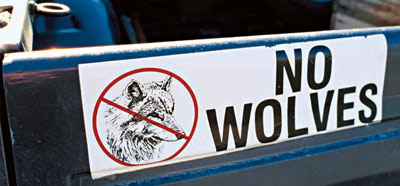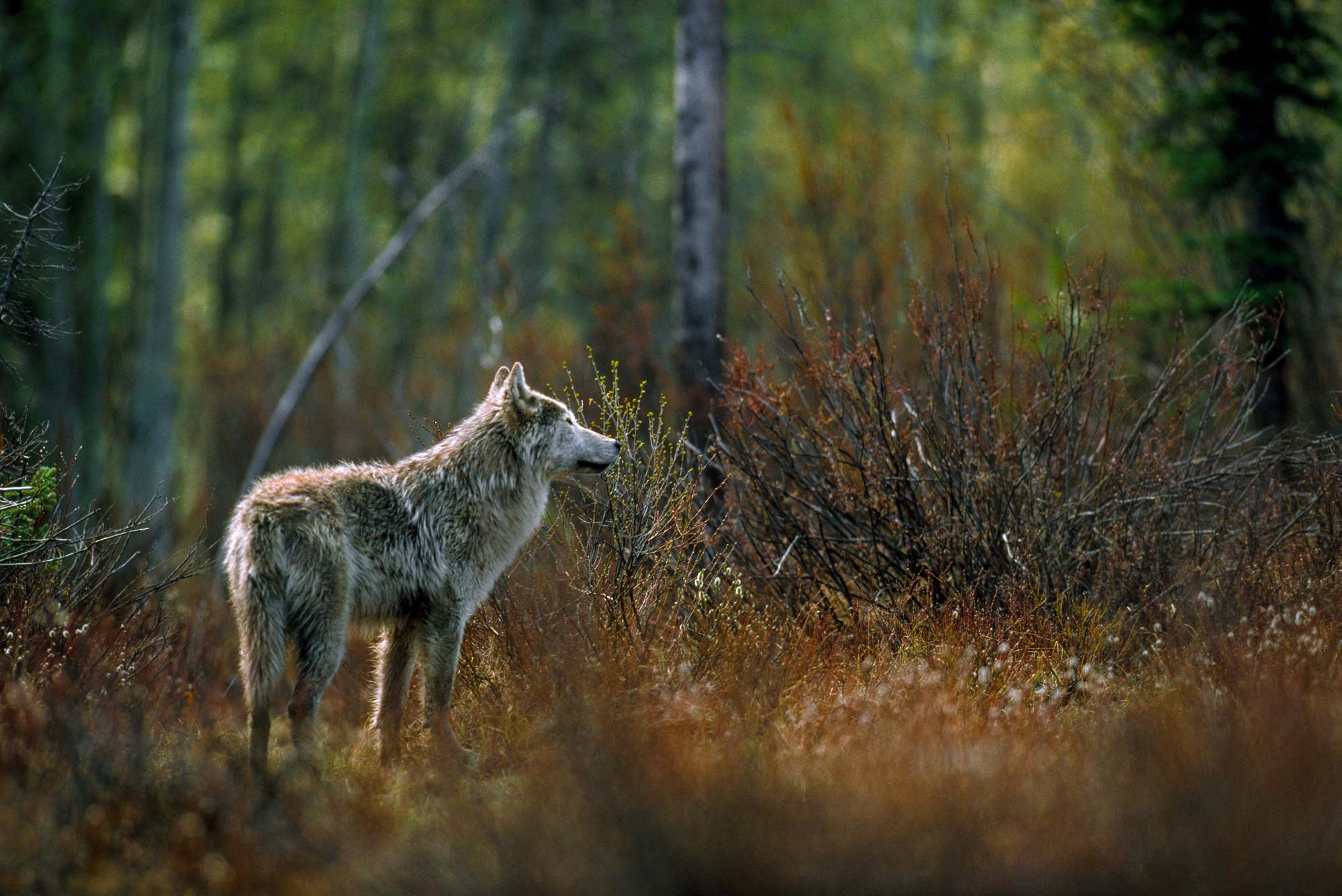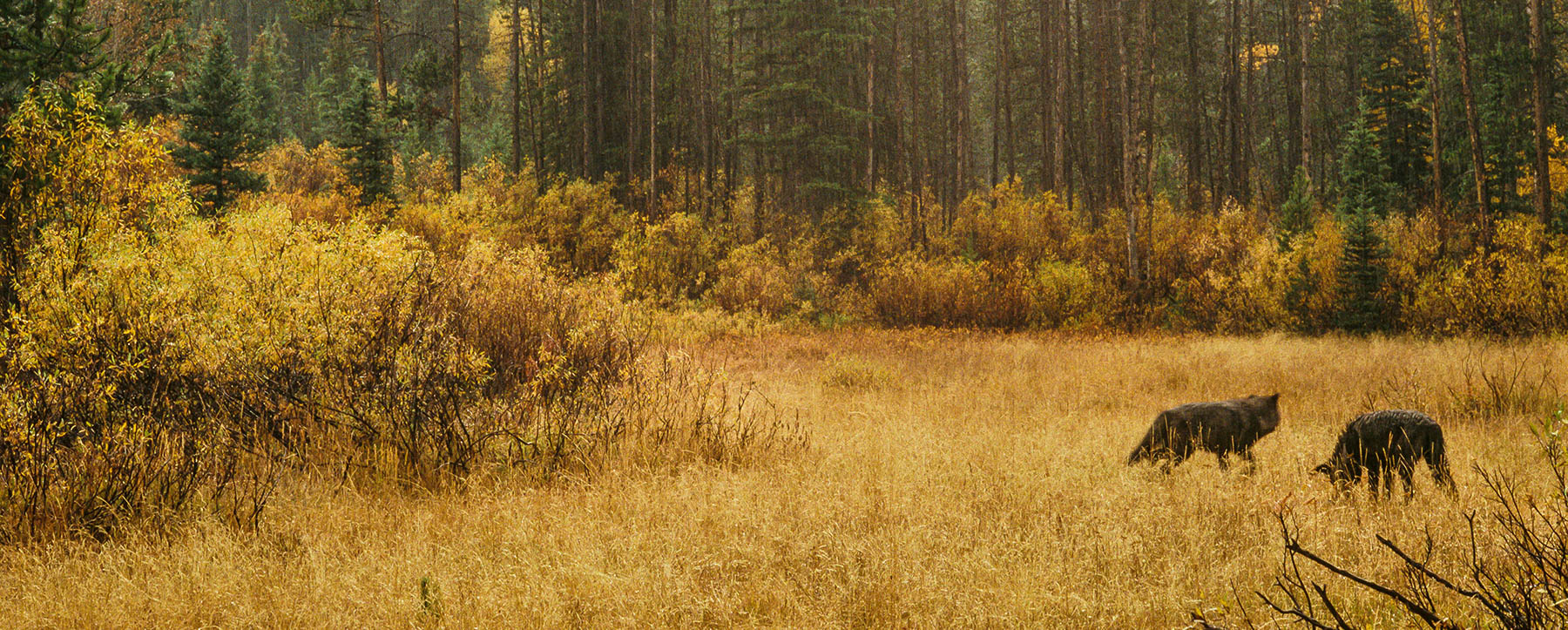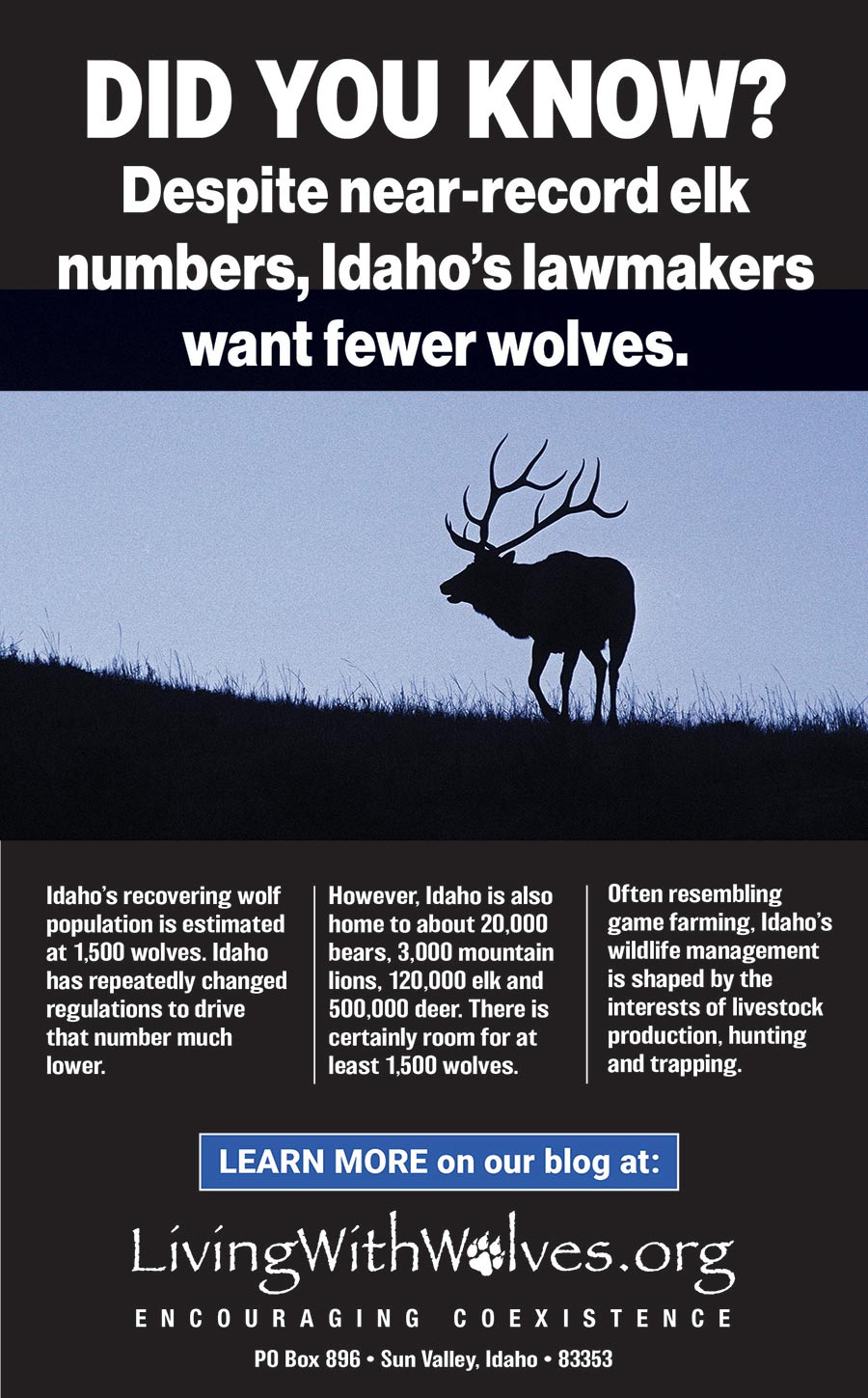The estimated 1,500 wolves in Idaho are neither a lot nor too many wolves for Idaho’s vast wild lands. Comparing populations of several large predator species for context, Idaho is home to 20,000 bears, 3,000 mountain lions, and 50,000 coyotes. Ever since wolves were reintroduced to Idaho in 1995, there has been an often-cited fear that wolves would decimate elk herds. Nearly three decades later, that has not come to pass. In fact, Idaho currently boasts near-record elk numbers. There is no biologically sound reason to drive down wolf numbers or to justify Idaho’s war on wolves. There are only political reasons. The new wolf killing law passed by the state legislature in 2021 was drafted by a ranching senator and signed into law by a ranching governor due to claims that wolves are devastating livestock producers and destroying elk herds. Neither claim is remotely based in fact.
Political Attitudes
The majority view from Idaho’s governing bodies is decidedly anti-wolf, with no interest in embracing gray wolves as an important part of Idaho’s natural heritage or healthy ecosystems. Idaho’s legislative bodies have always been amply populated with individuals representing the interests of large agricultural corporations, livestock production, and the hunting industry. These interests are unabashedly apparent in state policies. As of July 1, 2021, Idaho’s state legislature sanctioned an all-out assault on the state’s wolf population, expanding hunting and trapping, removing limits on the number of wolves an individual can kill, and allowing wolves to be killed in ways that are strictly prohibited in most other cases.
Policymakers in the state of Idaho did not welcome the reintroduction of wolves and were anticipating the day that federal Endangered Species Act (ESA) protections were removed, so that they could begin killing them. In 2007, the Idaho governor at the time, Butch Otter, declared openly that he would support public hunts to kill all but 100 of Idaho’s wolves as soon as wolf hunting became a legal reality. That same year, on the steps of the capitol, Governor Otter told a jubilant crowd of anti-wolf enthusiasts, “I’m preparing to bid for that first ticket to shoot a wolf myself.” When wolves were delisted from the ESA, bidding was not necessary, because Idaho policy did not impose a limit on the number of wolf tags or “tickets” for sale. The war against Idaho’s wolves was escalating.
Due to political pressure and subsequent lawsuits, the wolves of Idaho and Montana had federal ESA protections removed and restored twice between March of 2008 and August of 2010. The federal district judge who reinstated protections for the second time determined that removing protections for wolves in only two states was “a political solution that does not comply with the ESA.”
After that ruling and in defiance of federal law, Governor Otter ordered the Idaho Department of Fish and Game (IDFG) to no longer monitor wolves and to not arrest or investigate anyone who poached wolves. Instead, he wanted IDFG to double down on protecting deer and elk. “It’s important to remember that federal regulations do not allow the state or anyone else to kill a wolf because it is attacking, biting or even harassing a deer, elk or moose – only people, pets and livestock,” Otter said in a news release. “It is my contention that ungulates are the state’s ‘livestock,’ and that we should have the right to protect them like any livestock owner.”
Anti-Wolf Legislation
In 2011, Governor Otter signed a bill into law declaring a disaster emergency in Idaho due to wolves. The hysteria-laden bill described “a clear and present danger to humans” created by the “imported wolves,” claiming that, “the state’s citizens, businesses, hunting, tourism and agricultural industries, private property and wildlife, are immediately and continuously threatened and harmed by the sustained presence and growing population of Canadian gray wolves in the state of Idaho.” The presence of wolves “has altered and hindered historical uses of private and public land, dramatically inhibiting previously safe activities such as walking, picnicking, biking, berry picking, hunting and fishing.”
In light of that ludicrous hyperbole, it is worth noting, once again, that not one wolf from the recovering population of wolves in the American West has attacked a single person since reintroduction 27 years ago. Outdoor recreation is thriving more than ever in Idaho.
Nevertheless, the wolf disaster emergency bill passed in the Idaho Senate in a 27-8 vote. The bill’s Senate sponsor, cattle rancher Monty Pearce said, “There’s anti-wolf coalition groups all over the state that are pleading with us to do something” adding that people in Idaho are living in fear of their children being attacked by wolves at school bus stops.
Another state senator and sheep rancher, Jeff Siddoway, introduced a bill in 2012 to bring more tools to the table for those who want to kill wolves including the use of artificial light, night vision scopes, aerial hunting and live bait. Senator Siddoway said he would have no problem using his wife’s dog, “Sophie” to tie up outside as bait to lure in wolves. He suggested playing back recorded wolf howls, adding, “You try to get Sophie to chime in with the wolves. If they come down, you just start shooting.” The bill was withdrawn over concerns that such a bill would result in another renewal of federal protections for wolves.
In 2014, came a particularly egregious and detrimental legislative assault on Idaho’s recovering wolf population in establishing the Wolf Depredation Control Board. This permanent entity is granted $400,000 of Idaho taxpayers’ dollars each year. Additional monies are also allocated annually from the Idaho Department of Agriculture and IDFG to kill wolves. As part of the new anti-wolf legislation passed in 2021, the IDFG contribution to the Wolf Depredation Control Board increased from $110,000 to $300,000 annually. No other state manages wolves with this type of board.
In early 2020, Senator Bert Brackett introduced emergency legislation that proposed year-round hunting seasons, would create “wolf-free zones” to reduce conflicts with livestock, and sought an 80% reduction in Idaho’s wolf population. Senator Brackett, a cattle rancher, lives in southern Idaho, a region where there has never been any documented wolf presence. Nevertheless, he claimed, “Wolf numbers have continued to increase. Livestock depredation remains unacceptably high…More needs to be done. Ranchers’ livelihoods are being threatened by wolves.”

Science and Data Are Not Driving Wolf Management Decisions
Facts and data do not remotely support Idaho’s wolf policies especially where livestock is concerned. Wolf management within state borders was turned over to Idaho and Montana in 2011. Looking only at the counties where wolves live in Idaho, Montana, and Wyoming, federal data from 2015 showed that wolves killed only 148 out of the nearly 2 million cattle in those places. Many ranchers are opposed to wolf recovery because, like other predators, wolves can kill or injure sheep and cattle. However, the leading causes of livestock mortality are NOT wolves or even predators in general, but rather, exposure to bad weather, disease, and birthing complications.
There are federal and state compensation programs in place to reimburse ranchers who suffer livestock losses from wolf attacks. Even so, thousands of wolves have been killed since reintroduction on the basis of alleged livestock predation or the perceived threat thereof. Sometimes wolves are determined to be the cause of livestock deaths, but in many cases, they are simply assumed to be, and lethal control actions are undertaken to eliminate the wolf or wolves thought to be responsible.
Elk are the primary food source for gray wolves in the Rocky Mountains. Anti-wolf advocates insisted that wolves would eradicate elk herds, and yet Idaho’s current elk population is estimated at over 120,000 by IDFG, which is just 4% below the all-time, historical record of 125,000 elk. Furthermore, IDFG reports that elk hunters have had a series of record years in the past decade with elk hunter success rates remaining well above-average. Dating back to 1935, the past eight years have been the second longest stretch ever recorded in which hunters have killed more than 20,000 elk each year in Idaho. Simultaneously, IDFG reported 1,000 wolves at the end of 2019 as the highest ever year-end population of wolves since 1995. Clearly, wolves have not had a detrimental impact on Idaho’s elk population.
Despite clear statistical evidence to the contrary, Idaho’s leadership has consistently crafted a different narrative. Back in 2011, Senator Pearce was quoted as saying “We need to put as much pressure as we can on those wolves, pin them down and drive them back into the wilderness…I think we need to thin them down rapidly.”
Calling the Shots
Typically, the Idaho Fish and Game Commission makes decisions about state wildlife management. There are seven commissioners representing seven regions. None are wildlife biologists. They are appointed by the Governor and confirmed by the Idaho State Senate, both of which have been decidedly anti-wolf in recent history. By statute, no more than four can be from the same political party.
The IDFG Commission has been implementing changes in the last two years at a rate never before seen since gray wolves were reintroduced in 1995 and 1996. IDFG has implemented radical rule changes governing recreational wolf hunting and trapping in the state. In 2020, the commission scrambled to satisfy the state senate ahead of Senator Brackett’s bill, quickly implementing new wolf-hunting seasons, expanding them statewide to an astonishing 11 months or year-round. In early 2021, IDFG again expanded hunting and trapping across the state, in an attempt to establish uniformity in regulations across the state’s 99 designated hunting units.
In 2019, a single individual was allowed to hunt or trap up to 10 wolves in a given year. In 2020, the limit was increased to 30 wolves per individual. In 2021, as part of a new state law intended to radically reduce Idaho’s wolf population, there is now no limit to the number of wolves an individual can kill. New changes are adopted without allowing sufficient time to measure the effects of the previous set of changes on the wolf population, but that comes as little surprise in a state intent on killing as many wolves as possible.
Because wolves are elusive and tend to avoid close proximity to people, trapping and snaring is also employed extensively in Idaho to eliminate wolves. Wolf trapping and snaring has been expanded onto more public lands across southeast and south-central Idaho, where it was previously restricted to private land. As of July 1, 2021, trapping on private land became legal year-round. It is not uncommon for a provision to be approved on privately-owned land first and then later expanded to include public lands, moving down the proverbial slippery slope.
Priorities Revealed
The business model of state game agencies depends in large part on revenue from the sale of hunting permits and licenses as well as trapping and fishing licenses. IDFG views hunters, trappers, and anglers as their sole constituents, and policies reflect that focus because the revenue stream they are able to influence comes from hunting, trapping, and fishing advocates.
State game agencies are tasked with managing all wildlife within their borders, not just game animals. It is IDFG’s stated mission to “preserve, protect and perpetuate” all wildlife in Idaho. But when you are in the business of selling the rights to hunt big game, it doesn’t bode well for predators who eat those same animals. Unfortunately, this outlook does not align with the science-based arguments supporting the need for top-level predators to promote a healthy ecosystem. Sadly, where careful, professional management of a species is needed, as in the case of wolves, all too often, politics and dollars hijack science. Wolves are simply wild animals trying to exist in a state that is unjustifiably hostile to them.




